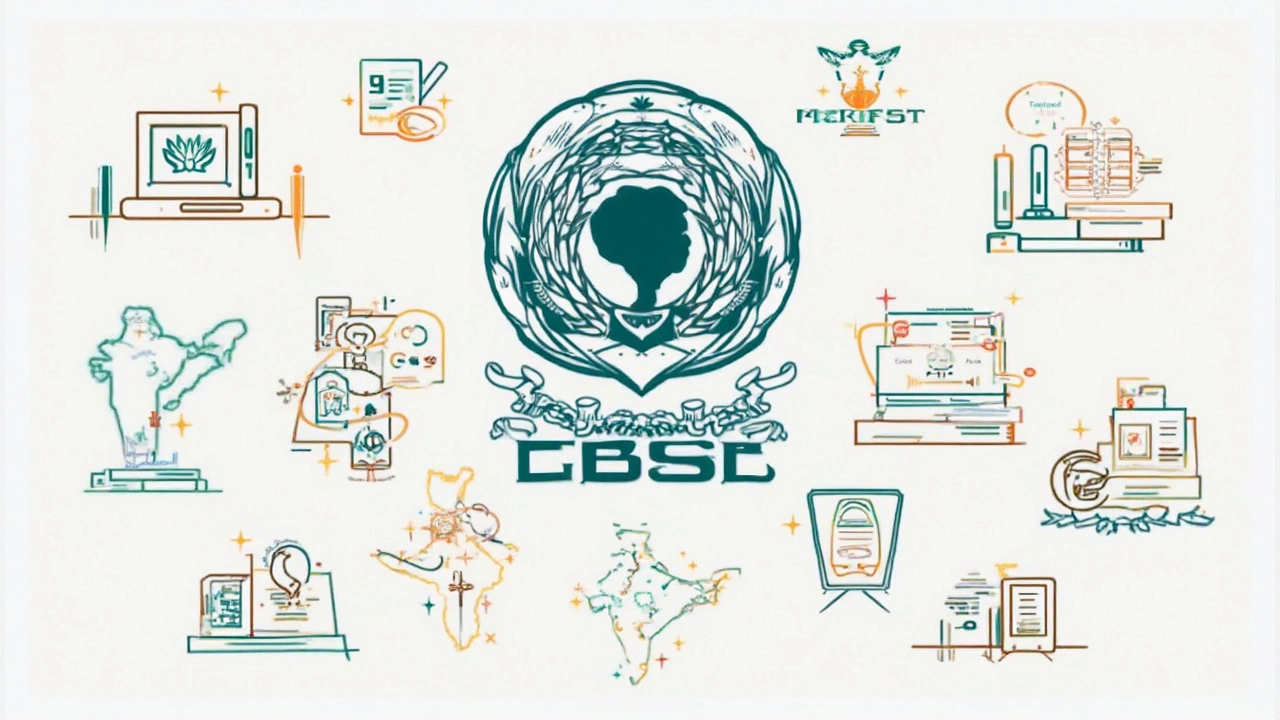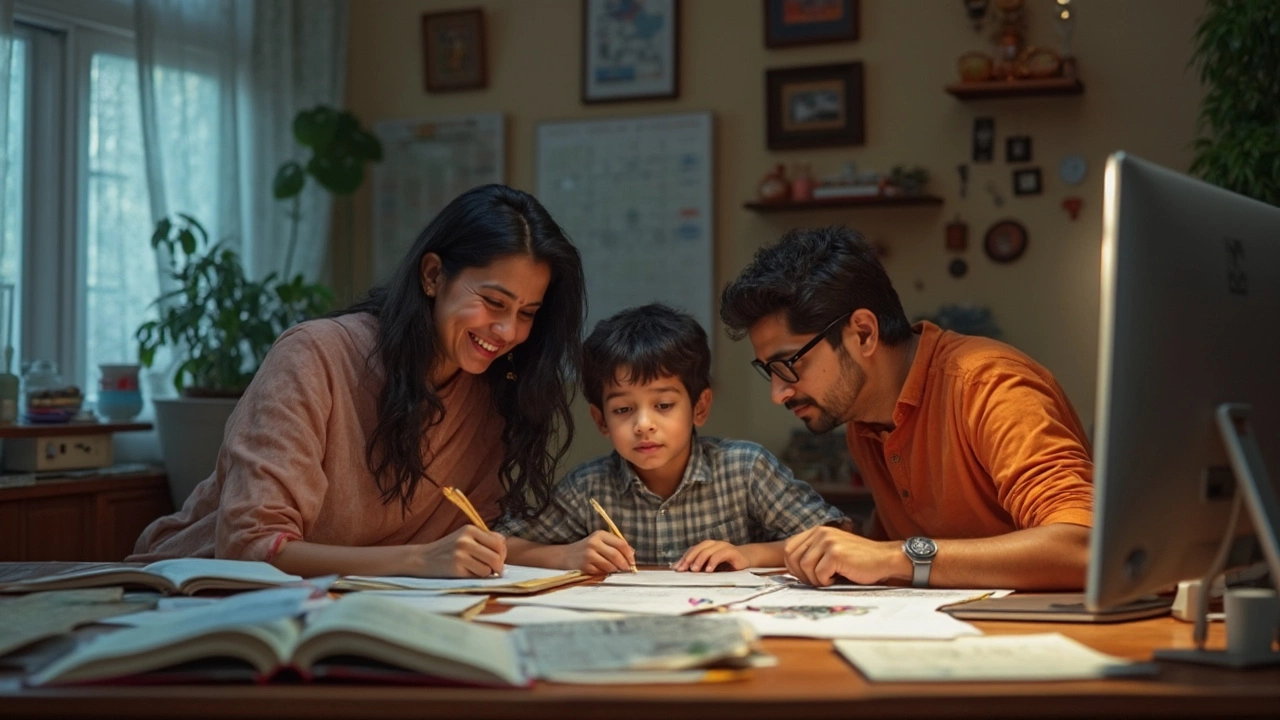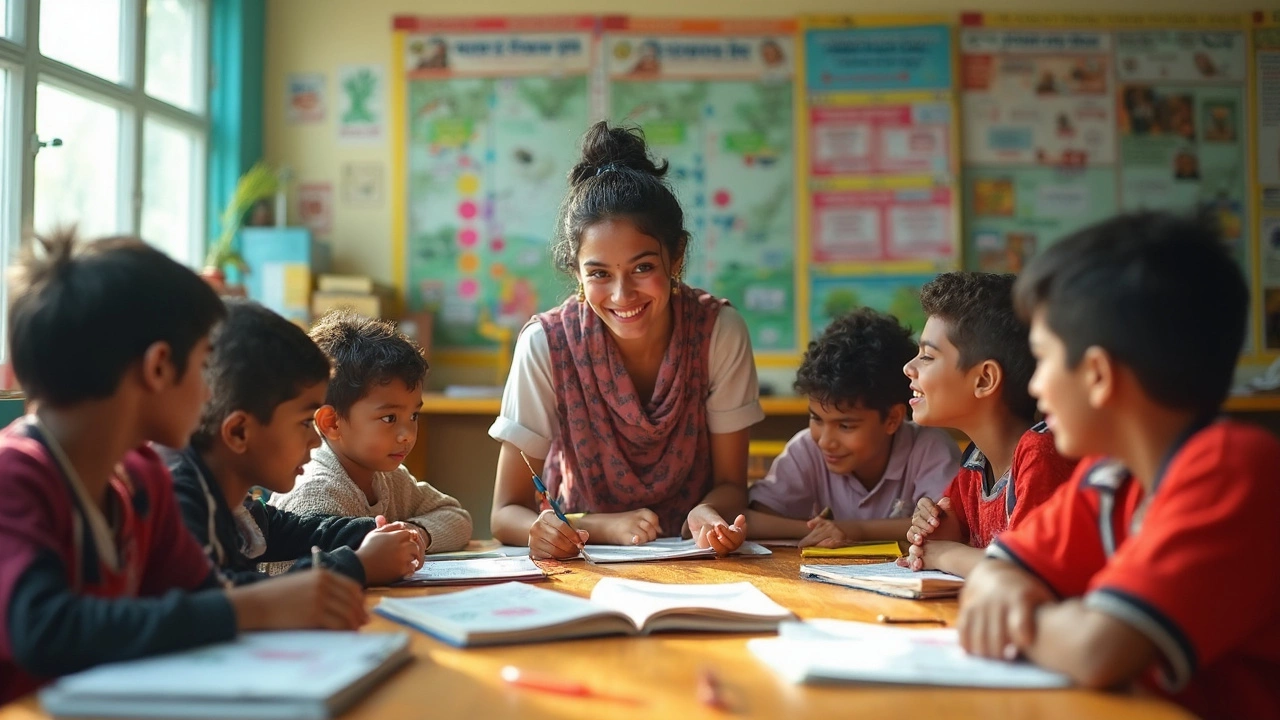If you're in India or connected to its education scene, you've probably come across the term CBSE a hundred times. But beyond the full form—Central Board of Secondary Education—what does CBSE actually stand for in practice?
Simply put, CBSE isn't just another school board. It's one of the most trusted school systems in India, shaping what millions of kids study and how they take exams, right from Class 1 up to Class 12. The CBSE syllabus affects student workloads, the way teachers plan lessons, and even how competitive entrance exams are structured.
So if you're a student, parent, or considering school options, understanding CBSE isn't optional. It can impact everything—from the textbooks you buy to the kid's chances at cracking JEE, NEET, or other big exams. Stick around to see how this board lines up against the rest and what concrete steps you can take to make the most of a CBSE education.
- CBSE: The Full Form and Its Origins
- CBSE Syllabus: What's Inside?
- Why Do Parents and Students Choose CBSE?
- CBSE vs. Other Indian Boards
- Tips for Making the Most of a CBSE Education
CBSE: The Full Form and Its Origins
CBSE stands for Central Board of Secondary Education. It’s not just any board – it’s actually one of the few national-level education bodies in India. The government set it up way back in 1929. At that time, the goal was pretty clear: create a solid system for public and private schools to follow a unified syllabus and handle exams in a consistent way.
What kicked things off? The urge to standardize education for kids whose parents moved around a lot, especially those in services like the army or government. Till this day, a big chunk of students in CBSE-affiliated schools are from these backgrounds. No matter if a student moves from Delhi to Chennai or from Assam to Rajasthan, the CBSE curriculum stays the same. That makes life easier for families on the move.
The headquarters for CBSE is in New Delhi. It’s watched over by the Ministry of Education, Government of India, making sure the curriculum evolves to match real-world needs. And yes, exams and results go through strict checks to keep things fair.
Here’s a neat fact: More than 28,000 schools in India—and a bunch of schools abroad—follow the CBSE syllabus. That’s a huge network. And it’s not just for Indian kids. There are CBSE schools in cities from Dubai to Singapore, helping NRIs and locals get the same education standard as back home.
| CBSE Key Stats (2024) | Number |
|---|---|
| Schools in India | 28,600+ |
| Schools Abroad | 240+ |
| Year Established | 1929 |
One thing people love about the CBSE system is that it aims to make education inclusive and accessible. No matter where you live, if you pick a school with the CBSE tag, you know what to expect with teaching, exams, and results. That stability is a big deal for families and students, especially when compared to several state boards in India which have different syllabuses and standards.
CBSE Syllabus: What's Inside?
The CBSE syllabus is what sets the Central Board of Secondary Education apart. It covers a wide range of subjects—think math, science, languages, social studies, and even electives like computer science and physical education. The board tweaks the syllabus almost every year to keep things fresh and in line with current trends. For example, coding and AI have started showing up, especially after 2021.
For core subjects, here's what students usually study:
- Mathematics: Covers everything from basic numbers to calculus and statistics. Problem-solving is always a big focus.
- Science: Splits into physics, chemistry, and biology from Class 9 onward. Labs are a must after middle school.
- Languages: English and Hindi are compulsory, but more options are popping up, like Sanskrit or French.
- Social Studies: A mix of history, geography, civics, and economics. Projects often come into play here.
- Optional Subjects: Computer science, physical education, and even entrepreneurship—students can pick what interests them from Class 9 or 11.
CBSE loves making students think, not just memorize. You’ll see a lot of application-based questions in exams—nothing is just about cramming. Projects, assignments, and periodic assessments add up to the final grades now, not just year-end exams. This makes it less stressful (well, a little bit) and definitely more practical.
Here’s how the subject breakdown usually looks for Classes 9–12:
| Class | Subjects (Core) | Optional Streams |
|---|---|---|
| IX–X | Math, Science, Social, English, Hindi/Other | IT, Physical Ed, Sanskrit, Arts |
| XI–XII | English + Stream Core (Science/Commerce/Arts) | Electives like CS, PE, Economics |
Because of its structure, the CBSE syllabus is a favorite for students who plan to take national-level competitive exams. Those are based on the CBSE format and pattern, so getting used to the CBSE way can give you an edge. Schools also follow a common academic calendar, which keeps things smooth, especially if you ever transfer from one state to another—no missing weird chunks of the syllabus.
Tip: Always check the official CBSE website for the latest syllabus. They post PDFs for every subject, so you won’t end up studying stuff that’s outdated or trimmed out recently. Save yourself some stress before exams!

Why Do Parents and Students Choose CBSE?
You can’t talk about Indian school life without the CBSE popping up. There are some concrete reasons why so many families pick a CBSE school over others.
First up, CBSE has a reputation for being student-friendly. The way the CBSE syllabus is built, kids aren’t just memorizing—they’re actually encouraged to understand core subjects like science, math, and English. For parents, that means less pressure, less mugging up facts, and more real learning.
Mobility also plays a big role. Because there are over 28,000 CBSE schools in India and around 240 outside the country, kids who have to switch cities, states, or even countries find the transition much easier. The curriculum is the same everywhere, so you’re not stuck relearning or missing big parts if you move.
For those already thinking about the future, CBSE is the go-to board if your child aims for top entrance exams like JEE (engineering) or NEET (medicine). Most of these exams base their questions straight out of the CBSE syllabus. It literally lines up with what your kids are already studying in school.
- CBSE textbooks, especially the NCERT books, are the gold standard for exam prep across the country.
- CBSE results are recognized by practically every university in India and many abroad, so applying for higher studies is less of a hassle.
- The system actually cares about sports, arts, and other skills—marks aren’t the whole story.
If you’re the type who likes numbers, check this out:
| # of CBSE Schools | Outside India | JEE/NEET Syllabus Overlap |
|---|---|---|
| 28,000+ | 240+ | 80–90% |
Lots of families also like that CBSE stresses English and Hindi equally, so kids are solid in both languages. Plus, annual updates make sure the content keeps up with real-world needs—no more outdated facts stuck in textbooks from the 1980s.
In short, people pick CBSE because it works almost everywhere, helps with competitive exams, and makes academic life a bit less stressful for both parents and kids.
CBSE vs. Other Indian Boards
Choosing between CBSE, ICSE, State Boards, or international options like IB or Cambridge can seriously affect a student’s school experience. So, what really sets CBSE apart?
First up, CBSE is nationwide. Over 27,000 schools are affiliated with it in India and abroad. ICSE (Indian Certificate of Secondary Education) has fewer affiliated schools, mostly in bigger cities. State Boards are run by each state, so the syllabus and exams differ a lot from place to place. International boards like IB and Cambridge focus more on global perspectives, project work, and open-ended questions.
The CBSE syllabus zooms in on Science and Math, and it’s tightly linked to competitive exams like JEE and NEET. If a kid wants to go for engineering or medical after Class 12, CBSE gives them an edge because its curriculum lines up with these entrance tests. State Boards often lean more towards local topics, regional history, or language, which may not be as aligned with national entrance tests.
ICSE is famous for its demanding curriculum—it's great for English language skills and balanced subject choices, but it can be a bit heavier for some students. CBSE tries to keep things manageable.
| Board | Subjects Focus | Exam Pattern | Reach |
|---|---|---|---|
| CBSE | Science, Math, balanced humanities | Objective/MCQ, national-level | Widespread, pan-India & abroad |
| ICSE | English, arts, science | Theory-heavy, lots of writing | Mainly urban, select cities |
| State Boards | Regional focus, varies by state | Differ by state, local language | Within each state |
| IB/Cambridge | Project-based, global concepts | Continuous assessment, research | Major cities, high fees |
One practical tip—no matter how good the school is, the board can influence college applications in India. Many colleges are used to CBSE results and cut-offs, which can make admissions a bit smoother.
In summary, if you’re looking for consistency, prep for national entrance exams, or plan to move between cities, CBSE is often the hassle-free route. But if your priorities are language, literature, or a local touch, ICSE or State Boards might fit better. And if you want international study or a different approach to exams, IB or Cambridge could be worth a look.

Tips for Making the Most of a CBSE Education
The CBSE system is pretty straightforward, but getting the best out of it calls for some practical moves. Whether you're a student gunning for high scores or a parent helping out with homework, a little strategy goes a long way.
First up, get super familiar with the CBSE syllabus. All major exams, including the boards, are based squarely on what’s covered in the official books—especially NCERT textbooks. Trying to cover outside resources and skipping NCERT is basically asking for trouble. Most toppers swear by NCERT for science and math in particular.
- Make a study timetable that lines up with the CBSE academic calendar. The schedule is released on the official CBSE website every year. Planning ahead means you won’t have to pull all-nighters before every exam.
- Practice sample papers and previous years’ question papers. The board loves to repeat question styles and even direct questions. Try solving papers in examination conditions—most students notice a jump in their confidence and timing.
- Keep an eye on the CBSE website. Important notices, exam pattern changes, and updates show up here first. For example, the CBSE Class 10 and 12 board exams shifted to a more competency-based model in 2023, which most students only picked up from official notifications.
- Take the CBSE’s focus on internal assessment seriously. Around 20% of marks in most practical subjects come from everyday projects and assignments. Treat these just like regular exams.
Students switching from another board should remember that CBSE schools follow English and Hindi as main teaching languages, with English being the medium for many competitive exams later. Brushing up on academic English gives you an edge, especially when writing those long answers in science and social studies.
And don’t ignore stress. The board exam culture can be intense. Daily breaks, open conversations with parents or teachers, and some kind of physical activity make a noticeable difference. CBSE schools in urban areas now offer counseling sessions and helplines for board students—use them if you need to.
Here’s a quick look at where students spend their prep time each week, based on data from a survey done with CBSE students in 2024:
| Activity | Average Hours per Week |
|---|---|
| Reading NCERT Books | 12 |
| Practicing Sample Papers | 6 |
| Assignments/Projects | 4 |
| Co-curriculars & Physical Activity | 3 |
One last tip: don’t underestimate CBSE’s focus on co-curriculars and activity-based learning. Sports, music, coding, and debate aren’t just time-fillers—they often factor into your report card and keep you sharp. Over the last few years, schools have started linking student performance in these areas with awards and scholarships, even for CBSE toppers.
